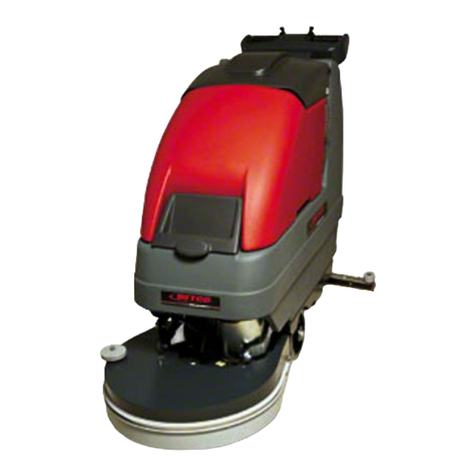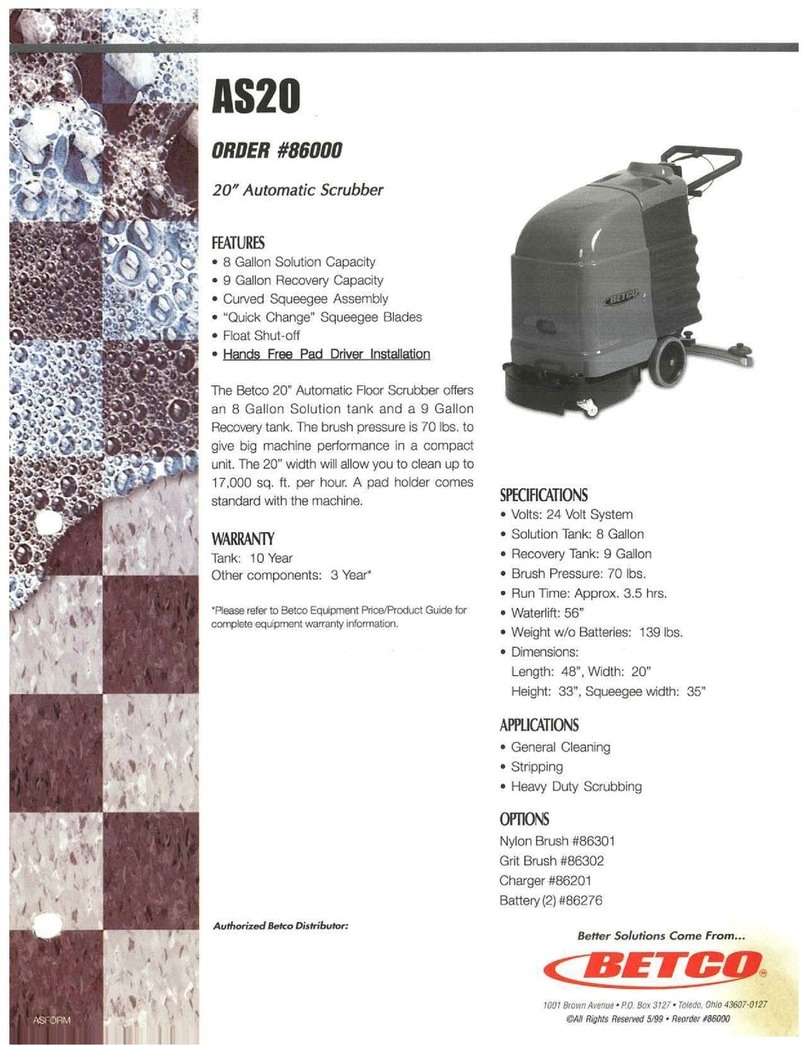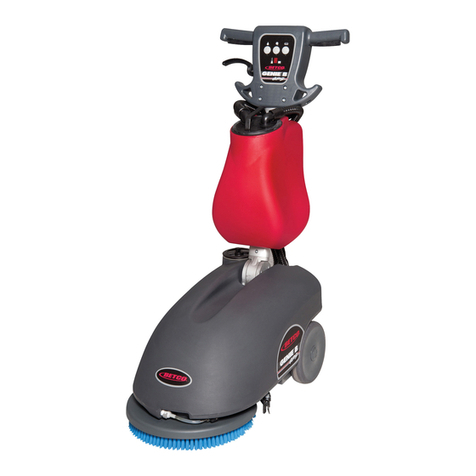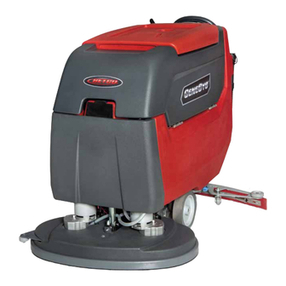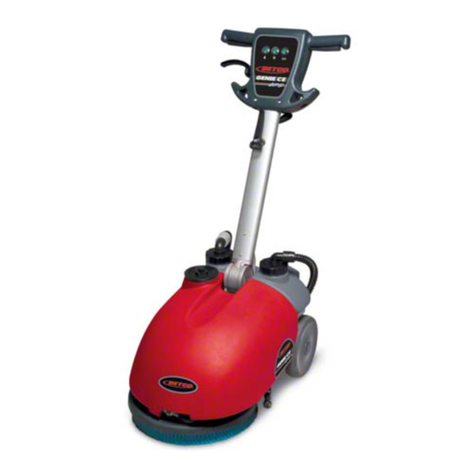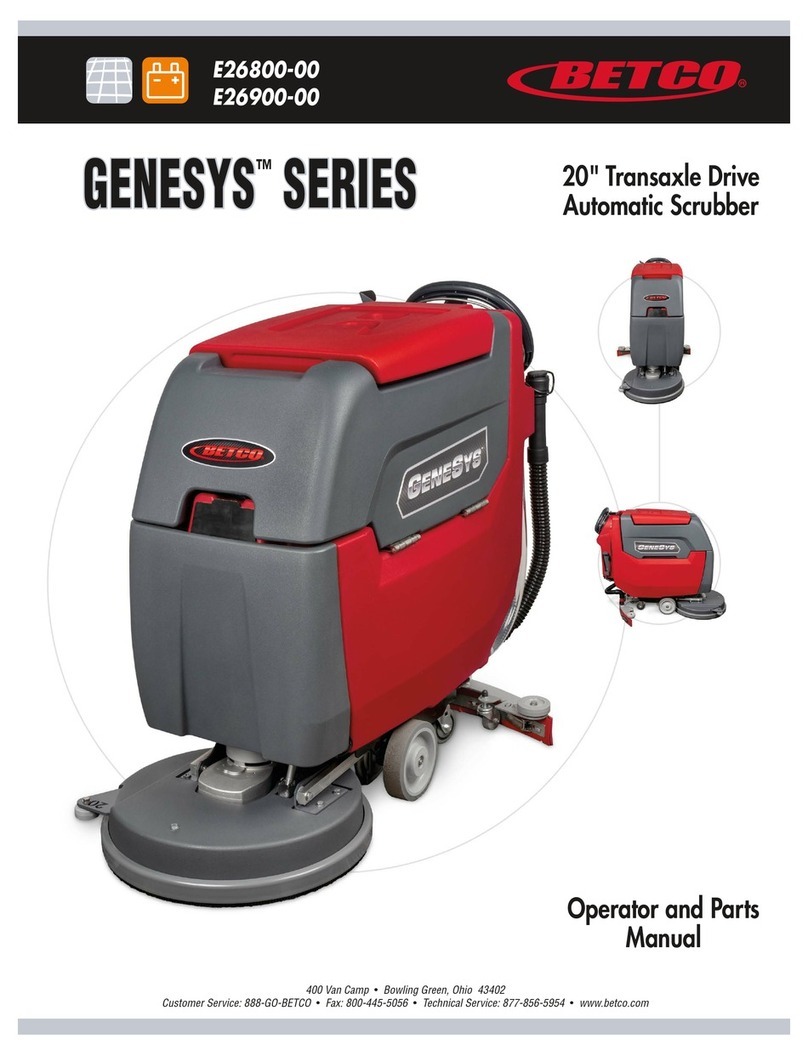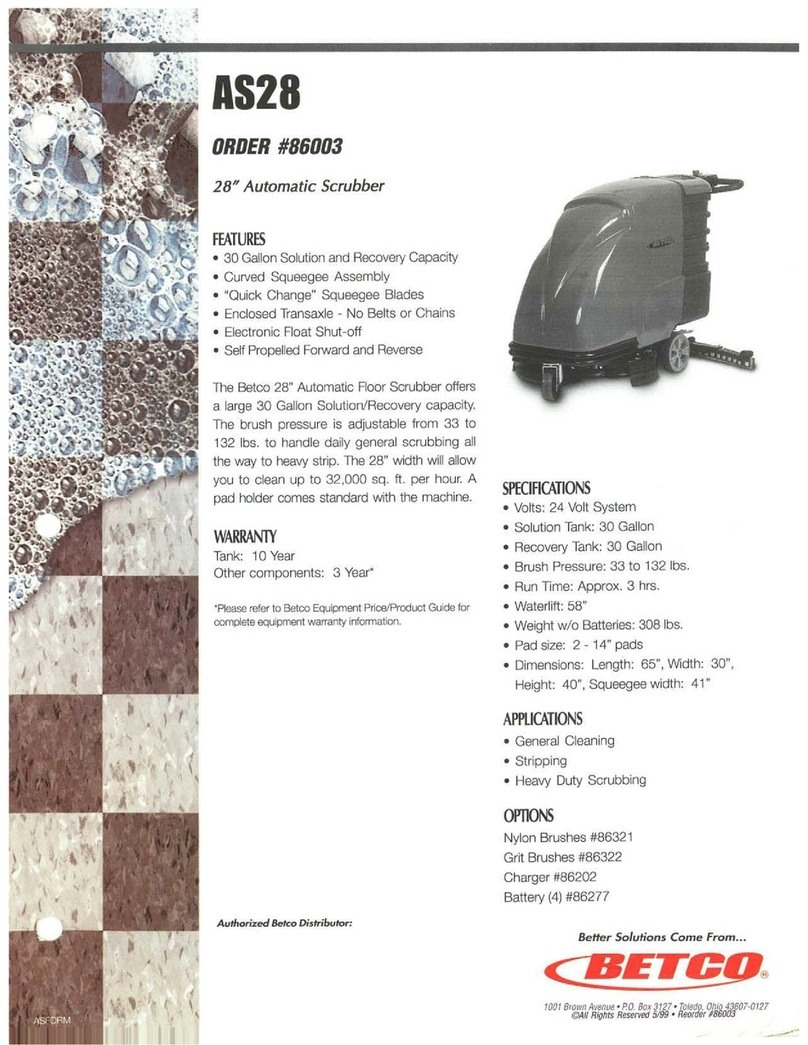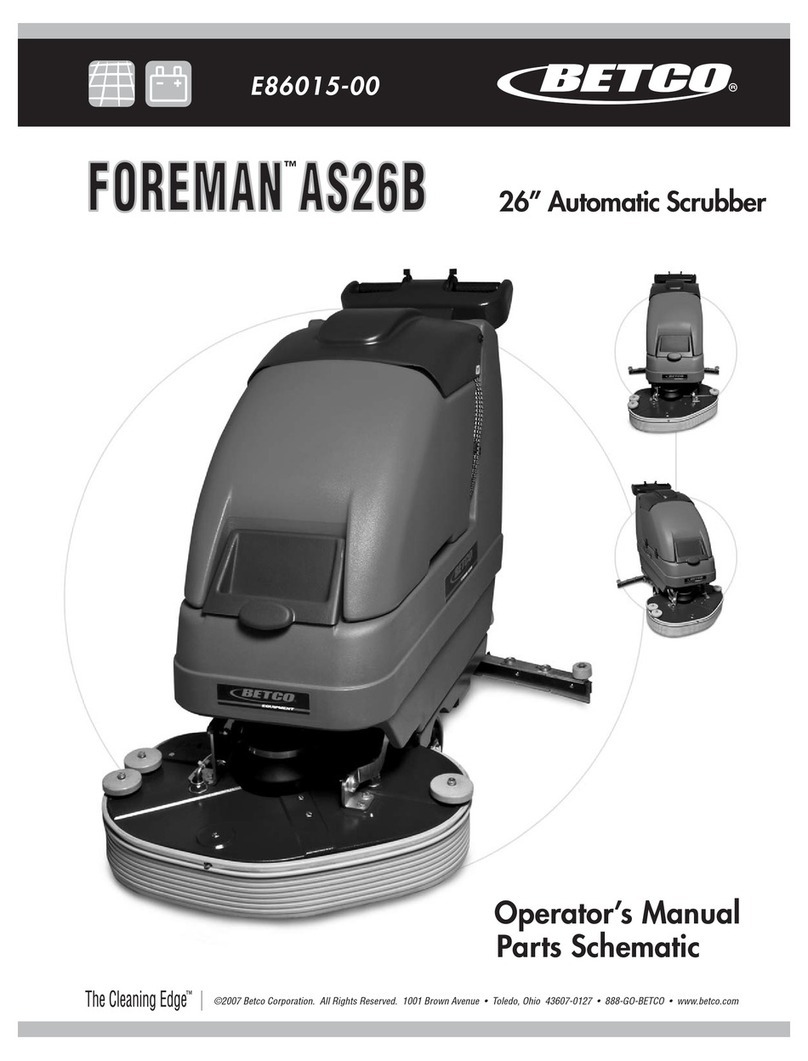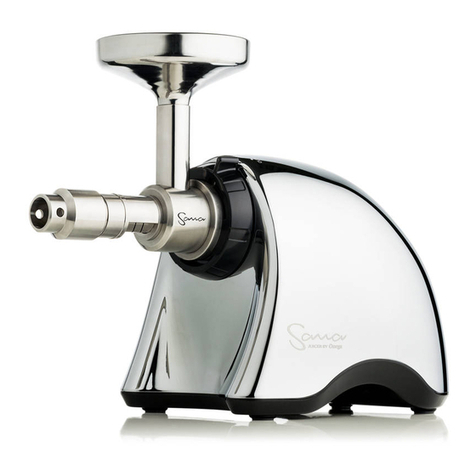
8
BATTERIES continued
BATTERY MAINTENANCE - WET CELL (FLOODED) BATTERIES ONLY
Wet cell (Flooded) batteries need water. Wet cell batteries contain lead plates submerged in an acidic electrolyte solution. The level of
electrolyte decreases over time, potentially exposing the lead plates to air and causing poor performance and possible damage to the
battery. The electrolyte level also varies with the amount of charge on the battery (higher with more charge, lower with less charge), but
the level should always be enough to cover the lead plates regardless of charge.
The electrolyte levels of all wet cell batteries need to be checked periodically to ensure proper performance and long battery life.
Depending on the local climate and use, Betco recommends that batteries should be checked at least once a week. If the machine sees
heavy use, check batteries every 2 to 3 days.
STEPS TO PROPERLY “WATER” BATTERIES:
1. Before charging, open the fill cap to check the current
electrolyte levels of each cell.
2. For any cell where the plates are not submerged and are
exposed, add only enough water to cover the exposed plates
and replace the fill cap. Do not completely fill partially or fully
discharged batteries.
WARNING: Filling partially or fully discharged batteries to
the recommended fill level will overfill the cell, causing
the electrolyte solution to leak as the solution expands
during charging.
3. Tightly replace all fill caps and fully charge the batteries.
4. After fully charging, open the fill cap to check the current
electrolyte levels of each cell.
5. Add water to bring the electrolyte level of any cell to the
recommended fill level as necessary. Fill levels for batteries
generally are 1/8” to 1/4” below the vent tubes (See Fig.5).
Check with the battery’s manufacturer for the proper fill level
for that brand and model.
6. Tightly replace all fill caps.
NOTE: Lead plates exposed to air can cause corrosion
on the plates, decreasing performance and negatively
impacting battery life. Proper electrolyte levels are only
determined with fully charged batteries. Adding water
to partially or fully discharged batteries should only be
done to cover the lead plates and prevent corrosion.
CAUTION: The electrolyte solution is a highly corrosive mixture of sulfuric acid and water -- always wear appropriate protective
equipment.
WARNING: Only add water to batteries. NEVER add acid to the batteries.
NOTE: It is strongly recommended to use distilled or deionized water only. Tap water or water with a high mineral content is
not recommended and should be avoided.
GENERAL BATTERY MAINTAINENANCE
Keeping the batteries clean from dust, dirt, and grime will help spot signs of trouble when they appear and avoid associated problems.
• Check that all vent caps are tightly in place.
• Clean the battery top with a cloth or brush and a solution of baking soda and water, rinse with clean water, and dry with a clean cloth.
When cleaning, do not allow any cleaning solution or other foreign matter to get inside the battery.
• Clean battery terminals and the inside of cable clamps to a bright metallic shine using a post and clamp cleaner.
• Reconnect the clamps to the terminals and thinly coat them with an anti-corrosive spray or silicone gel.
• Keep the area around batteries clean and dry.
